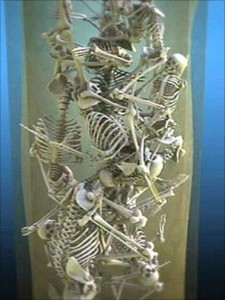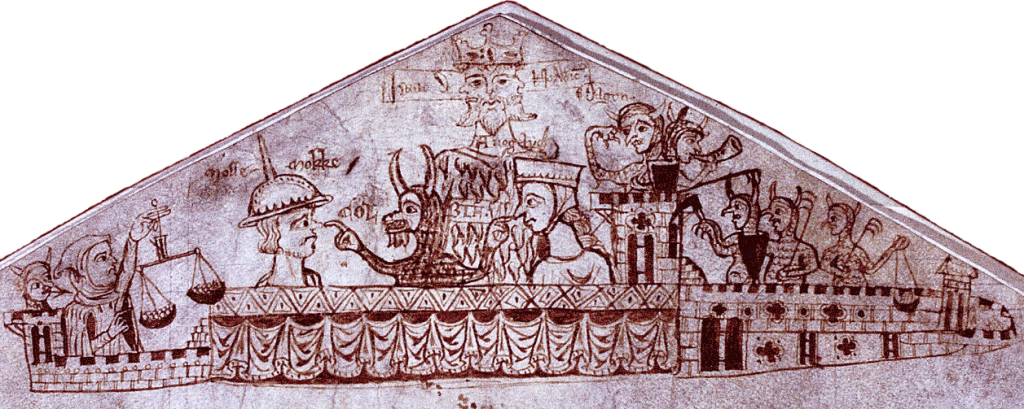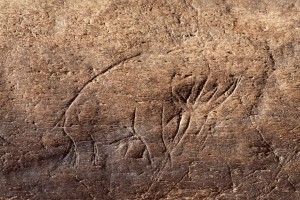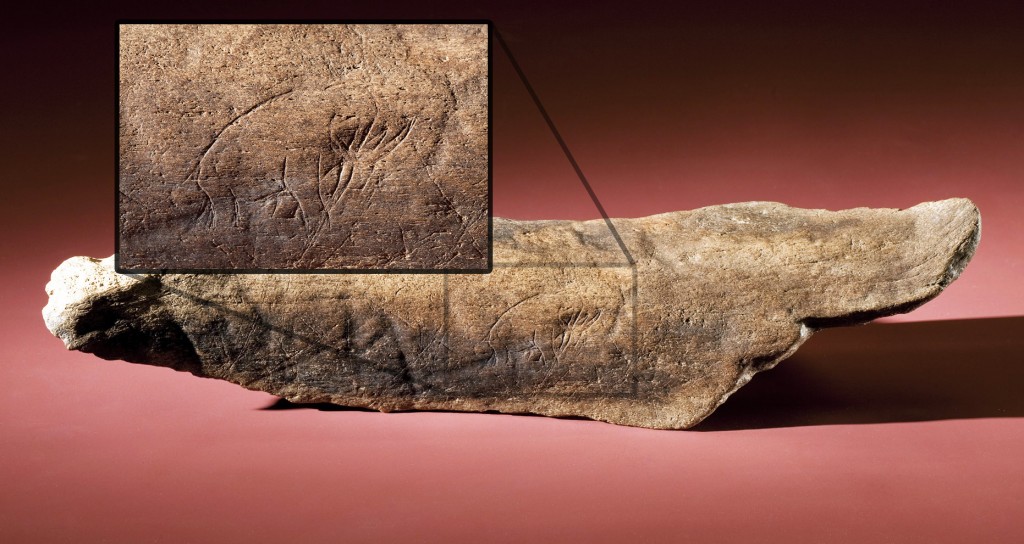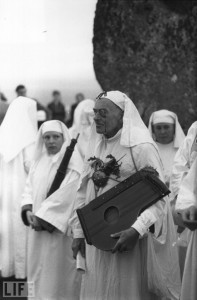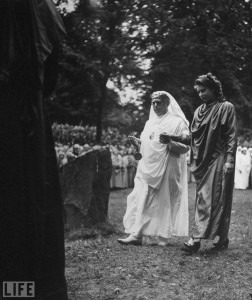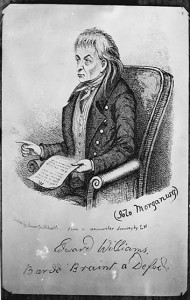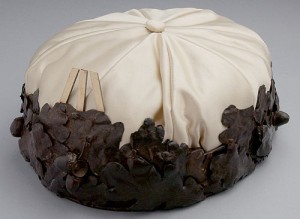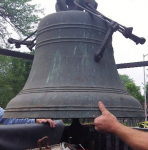 One of 40 or so remaining bells cast by Paul Revere has returned to Boston, the city where it was made by the Revere & Sons foundry in 1801. It has been purchased from the First Baptist Church of Westborough by the Old South Meeting House, a 1729 Puritan meeting house that was Colonial Boston’s largest building and is now a museum and center of spirited civic discussion. The bell has gone on display at the museum and will continue to be open to visitors this summer, included in the price of admission. Residents of Westborough can visit it free of charge. Come September, it will be installed in the Old South Meeting House’s 1766 clock tower.
One of 40 or so remaining bells cast by Paul Revere has returned to Boston, the city where it was made by the Revere & Sons foundry in 1801. It has been purchased from the First Baptist Church of Westborough by the Old South Meeting House, a 1729 Puritan meeting house that was Colonial Boston’s largest building and is now a museum and center of spirited civic discussion. The bell has gone on display at the museum and will continue to be open to visitors this summer, included in the price of admission. Residents of Westborough can visit it free of charge. Come September, it will be installed in the Old South Meeting House’s 1766 clock tower.
 The people of Westborough are bummed to lose such a prominent piece of their history. The bell was commissioned from Revere’s foundry by the Westborough town fathers for the town’s first meeting house. It was later moved to the Congregational meeting house, and then to the First Baptist Church when the new Congregational church was built with too small a belfry to fit the bell. The Baptists rented the bell from the Congregationalists for $2.60 a year before eventually buying it outright.
The people of Westborough are bummed to lose such a prominent piece of their history. The bell was commissioned from Revere’s foundry by the Westborough town fathers for the town’s first meeting house. It was later moved to the Congregational meeting house, and then to the First Baptist Church when the new Congregational church was built with too small a belfry to fit the bell. The Baptists rented the bell from the Congregationalists for $2.60 a year before eventually buying it outright.
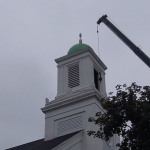 The First Baptist Church of Westborough closed its doors in 2007 due to declining attendance and increasing costs. The town tried to scrape up enough money to buy the bell and keep it in town, but were not able to raise sufficient funds. The bell was appraised by Skinners auction house at one million dollars. We don’t know how much the Old South Meeting House paid for it, but the museum’s executive director Emily Curran says it was considerably less than that.
The First Baptist Church of Westborough closed its doors in 2007 due to declining attendance and increasing costs. The town tried to scrape up enough money to buy the bell and keep it in town, but were not able to raise sufficient funds. The bell was appraised by Skinners auction house at one million dollars. We don’t know how much the Old South Meeting House paid for it, but the museum’s executive director Emily Curran says it was considerably less than that.
But the 876-pound iron bell, which Westborough town fathers purchased for $2.69 in 1801 from Revere’s foundry, might acquire even more historical significance in its new home.
It is one of the oldest Revere bells in existence — older than the bell at the Paul Revere House. It is returning to the birthplace of the 1773 Boston Tea Party.
And once there, it will be linked to the Old South Meeting House’s 1766 tower clock, one of the oldest operating tower clocks in the country.
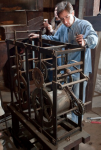 The Old South Meeting House tower hasn’t had a bell in it since 1876. The steeple was restored in 2009, including a thorough restoration of the clock, made in 1766 by renowned clock and watchmaker Gawen Brown. The historic clock, which after its completion was on display at Faneuil Hall until it was installed at the Old South Meeting House in 1770, was dismantled gear by gear, then taken offsite in painter’s buckets to be cleaned and fixed.
The Old South Meeting House tower hasn’t had a bell in it since 1876. The steeple was restored in 2009, including a thorough restoration of the clock, made in 1766 by renowned clock and watchmaker Gawen Brown. The historic clock, which after its completion was on display at Faneuil Hall until it was installed at the Old South Meeting House in 1770, was dismantled gear by gear, then taken offsite in painter’s buckets to be cleaned and fixed. 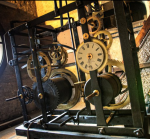 It was put back together in the steeple and is now back to its former glory. It’s New England’s oldest tower clock in continuing operation in its original location.
It was put back together in the steeple and is now back to its former glory. It’s New England’s oldest tower clock in continuing operation in its original location.
The bell will be polished and its original yoke, wheel and frame restored. Once the bell is mounted in its new home this fall, it will become the third Revere bell on the Freedom Trail, and most delightfully for Bostonians, it will ring again every hour on the hour. It has a lovely tone, too, which you can hear a muted version of in this video:
[kml_flashembed movie="http://www.youtube.com/v/Ans3zC_j7XQ" width="425" height="350" wmode="transparent" /]
What you see there are Westborough residents Mallory Shane and her mother Mary Batties ringing the 1801 bell by striking the clapper against the side. The bell was on the back of the truck that brought it to Boston, so the video captures the last time the Paul Revere bell rang in Westborough.
The next time it’s heard again will be in the historic center of Boston. For more pictures of the bell’s dismantling from the Westborough church, plus pictures of the clock restoration and news about events, see the Old South Meeting House Facebook page.

